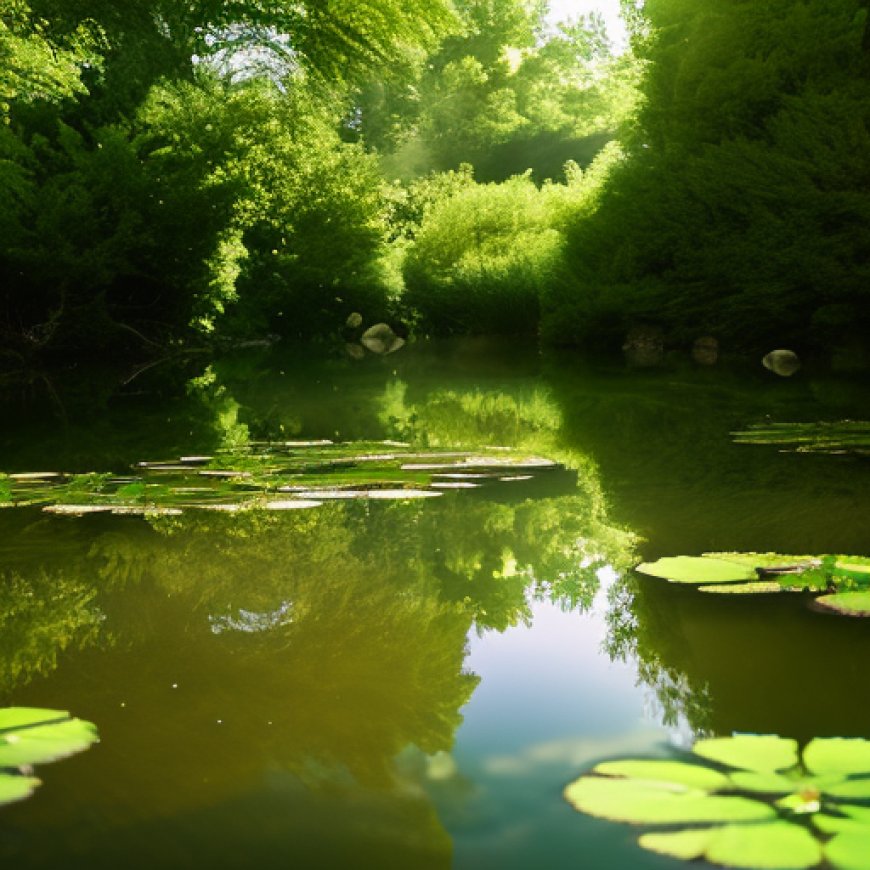Managing Pond Weeds by Mario Villarino – Ksst Radio


Managing Pond Weeds for Sustainable Aquatic Ecosystems
June 13, 2024
Effective management of pond weeds is crucial for maintaining healthy aquatic ecosystems, particularly in agricultural contexts such as those overseen by Texas A&M AgriLife Extension. To align with the Sustainable Development Goals (SDGs), it is essential to implement sustainable practices that promote biodiversity, protect water resources, and ensure the well-being of communities.
Preventive Measures
The first step in pond weed management is prevention. By implementing preventive measures, we can reduce the need for more intensive control methods and minimize the negative impacts on the environment. The following strategies are recommended:
- Minimize nutrient runoff into the pond to prevent excessive weed growth. This can be achieved by implementing best management practices (BMPs) on surrounding agricultural lands.
- Maintain a buffer zone of native vegetation around the pond to absorb nutrients before they enter the water, promoting water quality and reducing weed growth.
- Regularly monitor the pond to detect and address weed problems early, allowing for timely intervention and effective management.
Mechanical Control
Mechanical methods involve physically removing the weeds from the pond. While effective for small infestations, mechanical control may not be feasible for large ponds due to labor-intensive requirements. The following mechanical control options can be considered:
- Manual removal using tools like rakes, cutters, or weed harvesters.
- Utilization of specialized equipment designed for weed removal.
Biological Control
Introducing biological controls can be an effective and sustainable way to manage certain types of pond weeds. By leveraging the natural behavior of herbivorous fish, such as grass carp, we can significantly reduce weed biomass. However, it is crucial to consider the following:
- Consult local regulations to ensure the introduced species are appropriate for the specific pond environment and comply with SDG 15 (Life on Land).
- Evaluate the potential impact on native species and biodiversity before introducing any biological control method.
Chemical Control
Herbicides can be used as another option for managing pond weeds. However, it is essential to prioritize environmental sustainability and minimize harm to non-target species. The following considerations should be made:
- Use herbicides specifically labeled for aquatic use to avoid causing environmental damage and adhere to SDG 14 (Life Below Water).
- Apply herbicides based on the type of weed, the extent of the infestation, and the appropriate timing, following the manufacturer’s instructions.
- Consider consulting with a professional to ensure safe and effective application.
Texas A&M AgriLife Extension Support
Texas A&M AgriLife Extension provides resources and expertise to help pond owners develop integrated weed management plans tailored to their specific needs. By combining different management strategies, pond owners can maintain healthy, productive ponds while minimizing the negative impacts of invasive and excessive aquatic vegetation. Regular monitoring and adaptive management are key components of a successful pond weed management program.
For more information on pond weed management or any other agricultural topic, please contact the Hopkins County Extension Office at 903-885-3443 or email [email protected].
SDGs, Targets, and Indicators
-
SDG 14: Life Below Water
- Target 14.1: By 2025, prevent and significantly reduce marine pollution of all kinds, in particular from land-based activities, including marine debris and nutrient pollution.
- Indicator: The article mentions the importance of minimizing nutrient runoff into the pond to prevent weed growth, which is relevant to reducing nutrient pollution in aquatic ecosystems.
-
SDG 15: Life on Land
- Target 15.1: By 2020, ensure the conservation, restoration, and sustainable use of terrestrial and inland freshwater ecosystems and their services, in particular forests, wetlands, mountains, and drylands, in line with obligations under international agreements.
- Indicator: The article emphasizes the need for effective pond weed management to maintain healthy aquatic ecosystems, which contributes to the conservation and sustainable use of inland freshwater ecosystems.
| SDGs | Targets | Indicators |
|---|---|---|
| SDG 14: Life Below Water | Target 14.1: By 2025, prevent and significantly reduce marine pollution of all kinds, in particular from land-based activities, including marine debris and nutrient pollution. | The article mentions the importance of minimizing nutrient runoff into the pond to prevent weed growth, which is relevant to reducing nutrient pollution in aquatic ecosystems. |
| SDG 15: Life on Land | Target 15.1: By 2020, ensure the conservation, restoration, and sustainable use of terrestrial and inland freshwater ecosystems and their services, in particular forests, wetlands, mountains, and drylands, in line with obligations under international agreements. | The article emphasizes the need for effective pond weed management to maintain healthy aquatic ecosystems, which contributes to the conservation and sustainable use of inland freshwater ecosystems. |
Source: ksstradio.com








